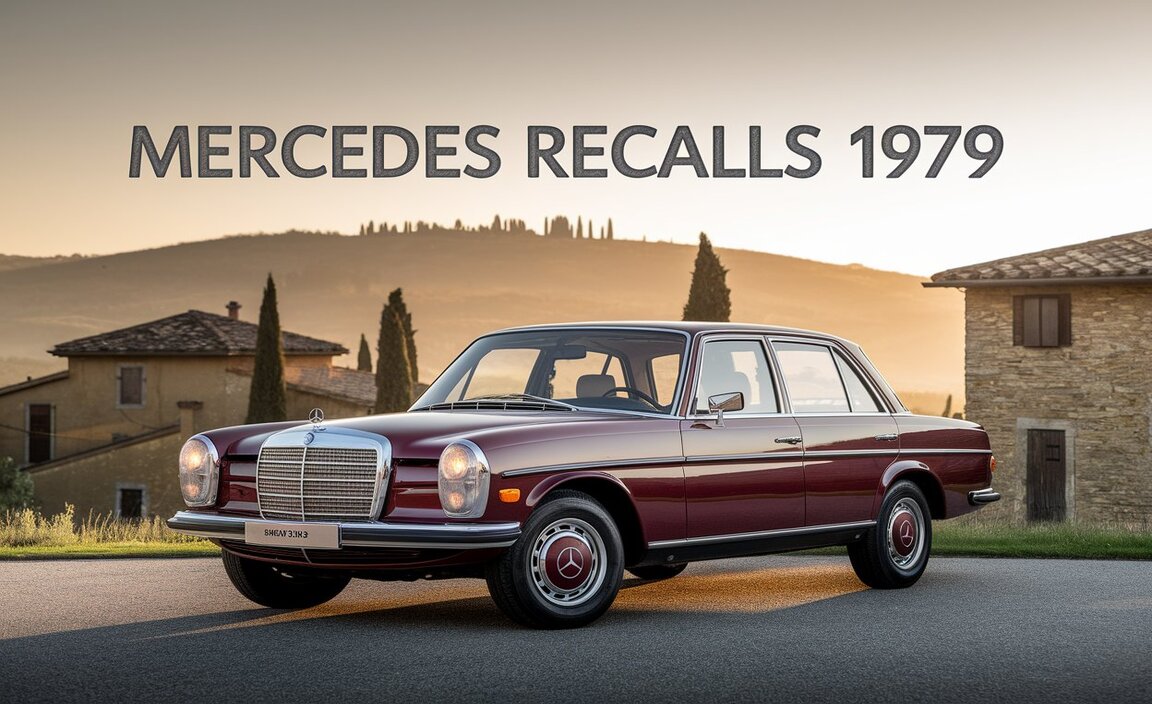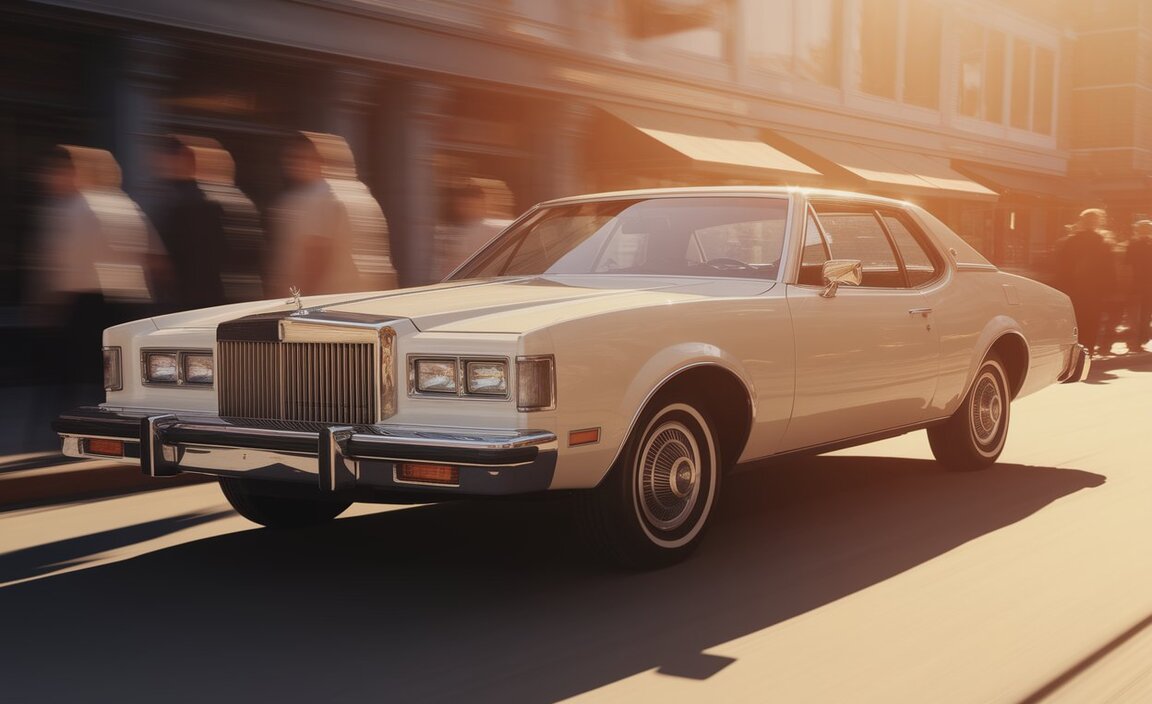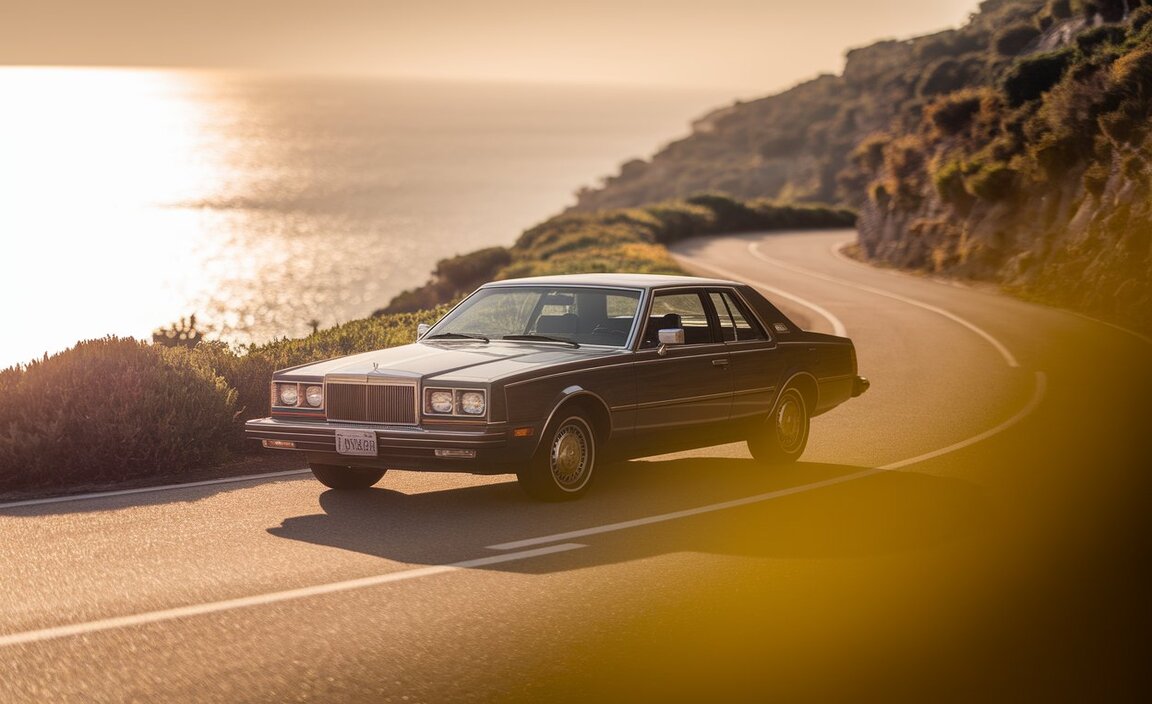There are years in automotive history that stand out like bold headlines. For Mercedes-Benz, 1979 was that golden year—the year the legendary G-Class came alive. Imagine it: a boxy, rugged, unapologetic machine rolling onto the scene, built not to impress but to survive.
What started as a military vehicle has grown into a global icon, admired by royals, rappers, and everyday adventurers alike. Let’s take a nostalgic drive back through time and revisit the story of how this mighty off-roader became more than just a car. Mercedes Recalls 1979!

Origins Of The G-Class
The German manufacturer Mercedes-Benz was already known for creating some of the finest luxury sedans, like the Mercedes-Benz S and the mysterious Mercedes-Benz 800 SEL, which puzzled enthusiasts with its unusual appeal. But when the late 1970s rolled in, the world needed something different. Rugged terrains, geopolitical uncertainty, and demands from governments for reliable vehicles all paved the way for something new.
The Mercedes-Benz G-Class was born with a purpose—to climb mountains, ford rivers, and cross deserts. It wasn’t just another market car model designed for the mass market. It was built to meet strict performance criteria that could keep soldiers safe in hostile environments.
Military Background And Initial Purpose
At first glance, the G-Class didn’t look like a luxury car. It looked like a machine designed by forensic engineering experts to withstand traffic hazards, landmines, and every conceivable safety defect. Its solid ladder-type frame, combined with coil-sprung rigid axles, gave it a strength that even rocky terrain couldn’t shake.
This was no sleek boot lid–obsessed sedan. It was a fortress on wheels. The manufacturers involved knew they were creating something beyond a typical car. It had to meet the fulfillment of user expectations not just for driving comfort but for survival.
Collaboration With The Shah Of Iran
Here’s a twist you might not expect: the G-Class owes its birth partly to the Shah of Iran. Back then, he was a major vehicle owner and a shareholder in Daimler-Benz. His influence pushed the idea forward, urging Mercedes to create a mighty off-roader that could serve military forces while appealing to governments and civilians. Think of it as one of those bizarre Mercedes-Benz S-Class side stories where power, politics, and automotive genius collided to produce something unforgettable.
The Early Years: 1979 And The Introduction Of The 280 GE
The debut came in 1979 with the Mercedes-Benz 280 GE. It wasn’t flashy like a Mercedes-Benz 300-CLASS 1979 sedan, nor mysterious like the MERCEDES BENZ 3005 prototypes whispered about in automotive information provider reports. Instead, it was raw and honest.
The 1979 Mercedes-Benz G-Class carried engine variants that leaned more toward durability than speed. It was never meant to be the fastest car on the Autobahn—it was designed to get you through mud, sand, and snow without failing.

Initial Design And Features
That first vehicle description read almost like a military dossier. The G-Class had frame with coil suspension, coil-sprung rigid axles, and a simple, no-nonsense interior. The doors shut with a reassuring thunk, like a vault sealing shut.
Safety wasn’t just a promise—it was engineered into every part. From child restraints in later models to detailed records with description of safety issues, Mercedes made sure that the G-Class would hold a record of safety issues that showed constant improvements.
The Boxy Design: Aesthetic And Functional Significance
Let’s pause for a second. That boxy design—it’s more than just an aesthetic choice. The flat surfaces, upright windshield, and squared-off edges gave it a timeless look. More importantly, the shape made it practical for military use, easy to repair in the field, and resistant to damage.
Even today, people love the way it looks. Some say it’s like comparing an ancient castle to a modern skyscraper. Both are impressive, but one has that nostalgic video charm. It’s like finding a 40-second long video of your childhood—simple, raw, but unforgettable.

Evolution From Military Vehicle To Luxury Icon
Now, here’s where the story takes a wild turn. The G-Class could have stayed a military-only product, gathering dust in old defense contracts. But Mercedes saw an opportunity. What if this military vehicle could enter the civilian world? What if it could compete not only with popular brands in the SUV market but also redefine what luxury meant? And so, the transformation began.
Transitioning To Civilian Markets
Mercedes-Benz had already built a reputation for sedans like the Mercedes-Benz 300-CLASS, admired for comfort and technology. Bringing the G-Class into the civilian spotlight meant blending ruggedness with refinement. Early buyers loved it. Yes, it looked like a box on wheels, but that box could climb mountains and still take you to the opera. It was the product to fracture the divide between off-roaders and luxury cars.
Embracing Luxury Without Compromising Off-Road Capabilities
Over time, the G-Class gained leather seats, wooden trims, and advanced safety technology. But it never lost the grit that made it special. It still had that power steering pump, air conditioning compressor, and crankshaft pulley designed to work under stress. The engine and engine cooling systems were robust enough to keep going in the desert or the Arctic. Mercedes proved that you could embrace luxury without selling out the spirit of adventure.
The Craftsmanship Of The G-Class
Part of the magic lies in how it’s made. Unlike mass-produced cars, the G-Class is still hand-built in Austria. Every model goes through meticulous checks, almost like forensic engineering inspections. This level of attention to detail and design consistency ensures that even though the car has evolved, it hasn’t lost its soul. You don’t just buy a G-Class—you inherit a tradition.
Cultural Impact And Celebrity Endorsement
Of course, it wasn’t long before celebrities caught on. The G-Class became a rolling status symbol. From Hollywood stars to business tycoons, everyone wanted to be seen in one. Even Toto Wolff, the Mercedes-AMG Formula One boss, is often spotted around them. For stars, it wasn’t just about driving—it was about projecting power. The G-Class became a symbol of prestige much like the Mercedes-Benz S-Class, but with a bolder, more rebellious edge.
G-Class As A Symbol Of Power And Prestige
The legendary G-Class carries a message. When a vehicle owner pulls up in one, it says: “I can conquer any terrain, and I choose to do it in style.” That’s why it appears in music videos, action films, and political convoys. Its 38-year-old history by the late 2010s already made it a legend. Today, with over four decades of stories, it stands as one of the longest-lasting icons in automotive history.

Notable Celebrity Ownerships And Appearances
From the Kardashians to world leaders, the G-Class has become more than a car—it’s part of pop culture. Some celebrities even customize them into bizarre versions, echoing the trend of the bizarre Mercedes-Benz S-Class modifications we sometimes read about. Every time it pops up in a film or on Instagram, it adds another chapter to its myth.
Technological Advancements Over The Decades
Despite keeping its old-school looks, the G-Class is far from outdated. Over the years, Mercedes has rolled out new models and variants packed with safety technologies. We’re talking traction control, advanced engine variants, and systems that keep roads safe by reducing accidents. Each model has been designed to avoid issues for vehicles that plagued earlier generations, backed by constant updates from Mercedes-Benz USA, LLC and other global branches.
Introduction Of New Models And Variants
From the G 500 to the AMG-tuned beasts, the G-Class has seen countless transformations. Every variant is a mix of heritage and innovation. Even the Mercedes-Benz 300-CLASS lineage echoes here, showing how Mercedes takes lessons from one family of cars and applies them across the board.
Each update comes with detailed records with description of safety issues, vehicle identification processes, and sometimes even safety recalls when needed. That’s the mark of a responsible vehicle manufacturer.
Incorporation Of Modern Technologies
The latest G-Class isn’t just about brawn. It’s got high-tech infotainment, adaptive cruise control, and even advanced child restraints to keep families safe. These safety aspects are not just regulatory—they’re part of Mercedes’ DNA. When a product failure happens, Mercedes doesn’t hide it. They investigate, issue a description of safety issues, and ensure a fix. That transparency builds trust.
Future Of The G-Class
So, where does the story go from here? The world is changing, and even market car models are going electric. The G-Class, too, is preparing for its next chapter.

The Advent Of Electric Variations
Mercedes has confirmed plans for an electric G-Class, often dubbed the EQG. Imagine the same legendary G-Class spirit but powered by batteries instead of diesel. It will still handle rocky terrain, but it will do so silently. It’s a bold move, but one that shows the G-Class is ready to adapt without losing its identity.
Commitment To Tradition And Innovation
Through it all, the G-Class has stayed true to its roots. Whether it’s addressing a safety defect, improving safety technology, or meeting performance criteria, it never forgets where it came from. The 1979-born Mercedes-Benz G-Class is more than just a vehicle.
It’s a story of resilience, innovation, and cultural significance. It started as a military project, became a luxury icon, and now marches into the electric future. Like that nostalgic video you can’t stop replaying, the G-Class reminds us that some legends never fade—they just evolve.
Conclusion
The story of the 1979-born Mercedes-Benz G-Class is more than a tale of a car—it’s a journey from battlefield roots to red-carpet fame. Built as a mighty off-roader, refined into a luxury icon, and now preparing for an electric future, the legendary G-Class proves that true design stands the test of time.
From its solid ladder-type frame to its celebrity status, it carries both heritage and innovation. As Mercedes recalls 1979, the year the legendary G-Class was born, we’re reminded that some vehicles don’t just move people—they inspire generations.
FAQs
1.When Was The Mercedes-Benz G-Class First Introduced?
The Mercedes-Benz G-Class was first introduced in 1979, originally designed as a rugged military vehicle before evolving into a luxury SUV icon.
2.Why Was The Mercedes G-Class Created?
The G-Class was created to meet military needs, offering durability and off-road capability with a solid ladder-type frame and coil-sprung axles.
3.How Did The G-Class Transition Into The Civilian Market?
Mercedes adapted the G-Class by adding comfort, luxury, and safety features, transforming it into a premium SUV without losing its off-road strength.
4.What Makes The G-Class Design Unique?
Its iconic boxy design is both aesthetic and functional, making it durable, easy to repair, and instantly recognizable across decades.
5.What Is The Future Of The Mercedes G-Class?
The G-Class is heading toward electrification with the EQG, keeping its legendary off-road spirit while embracing modern sustainability.
